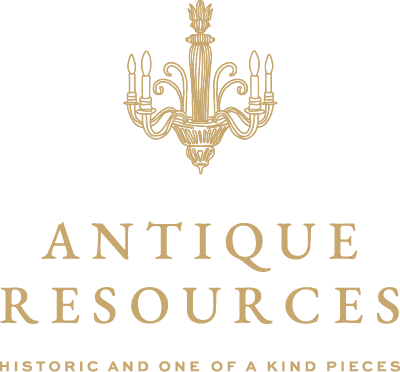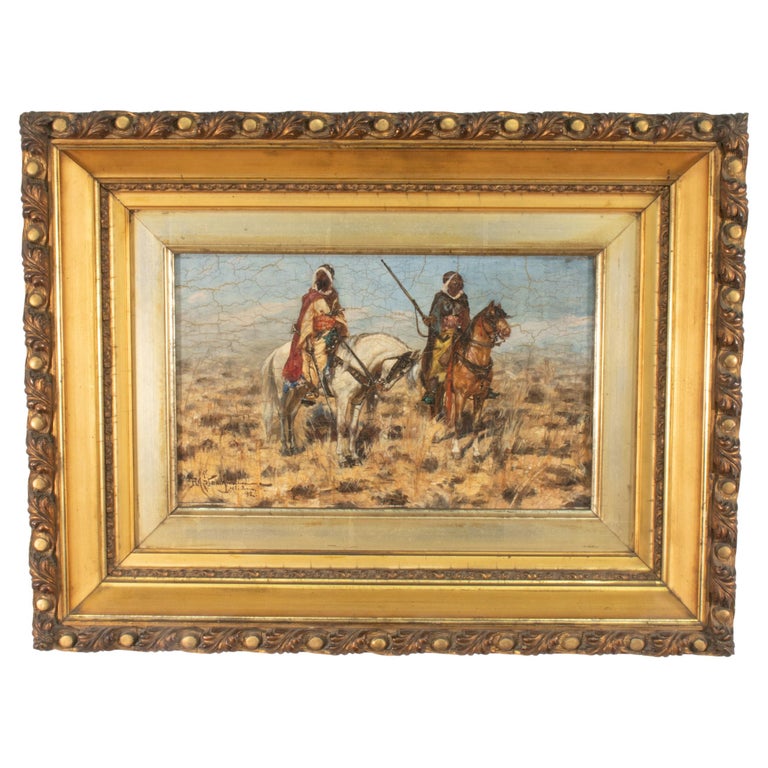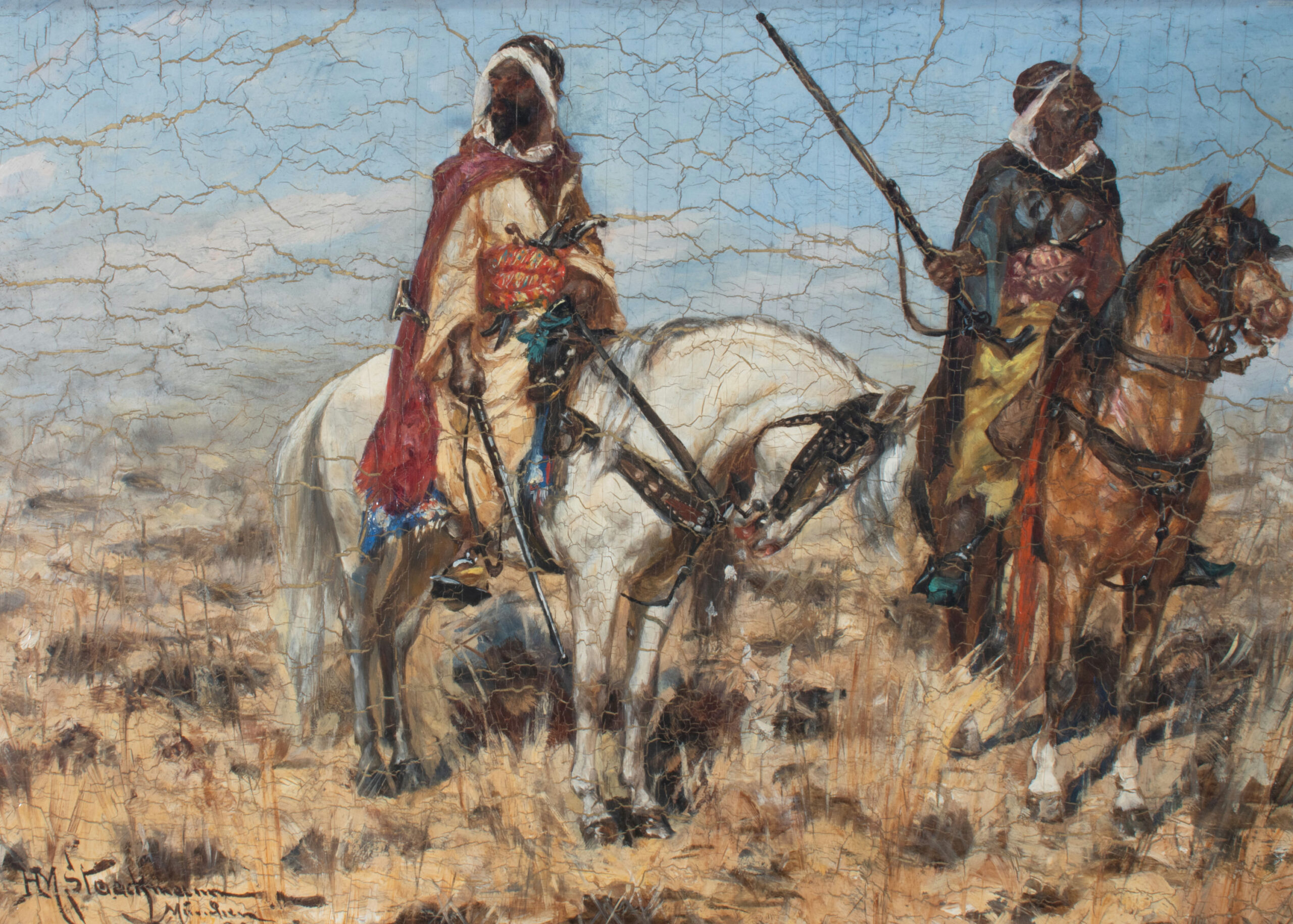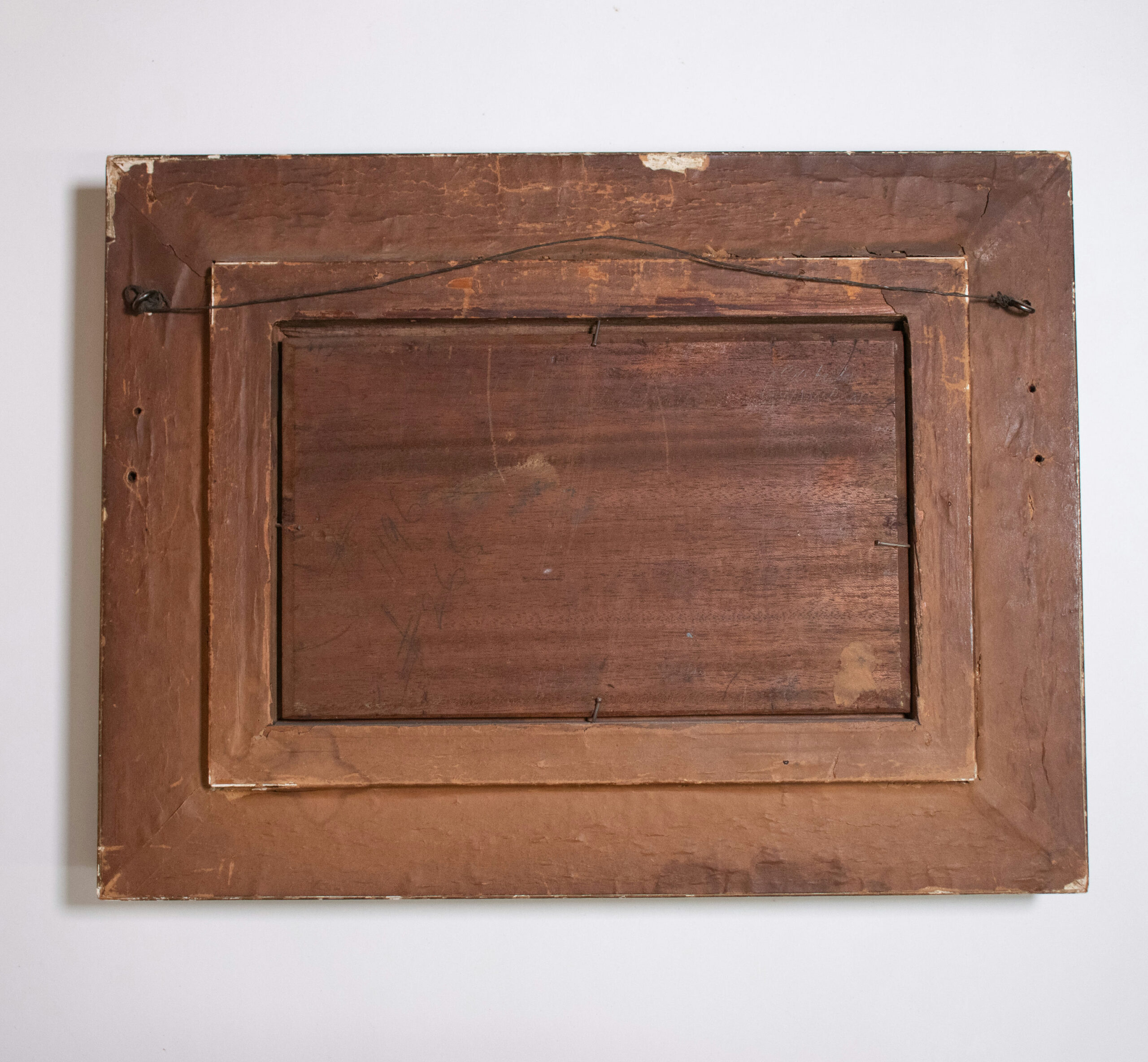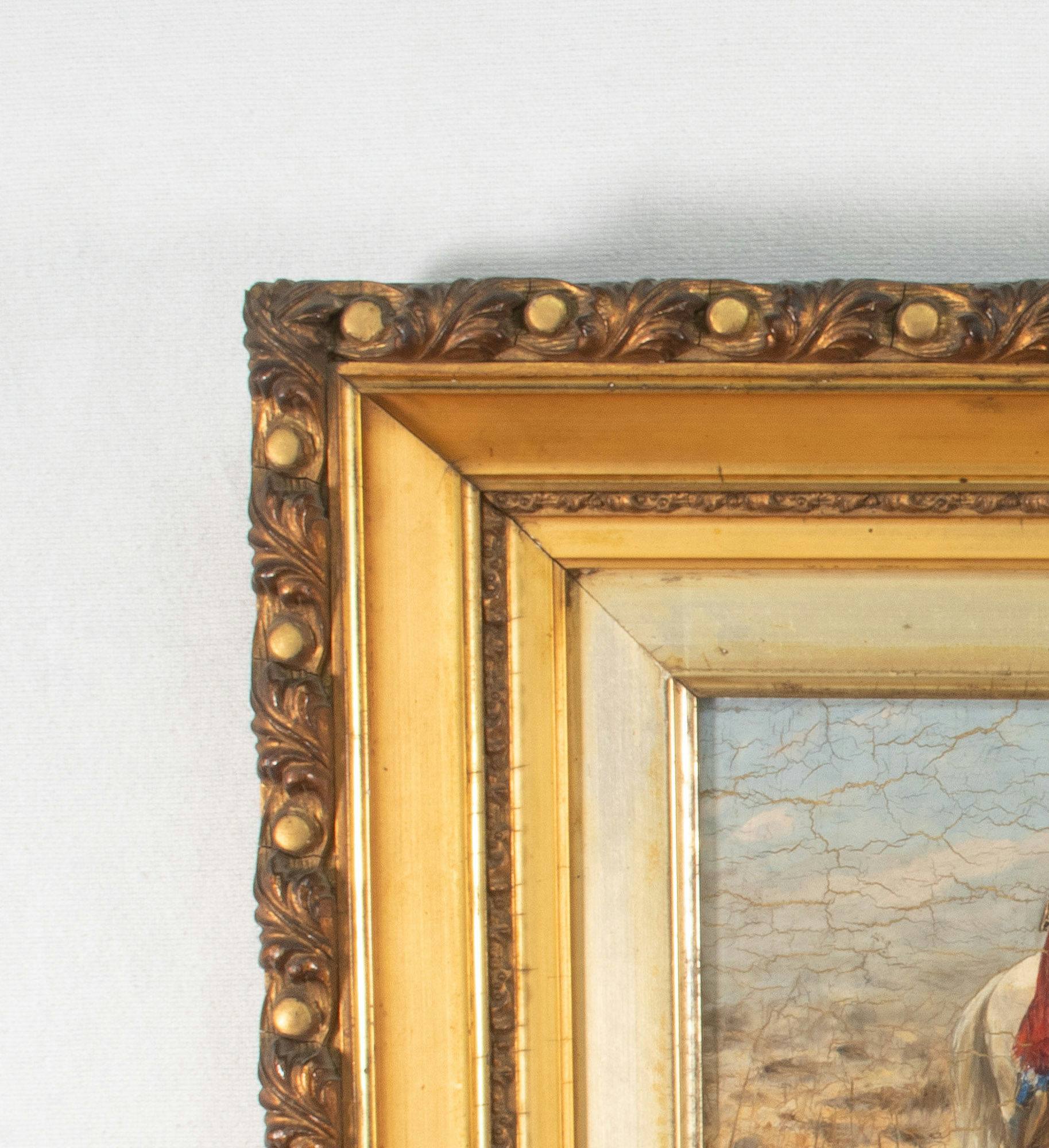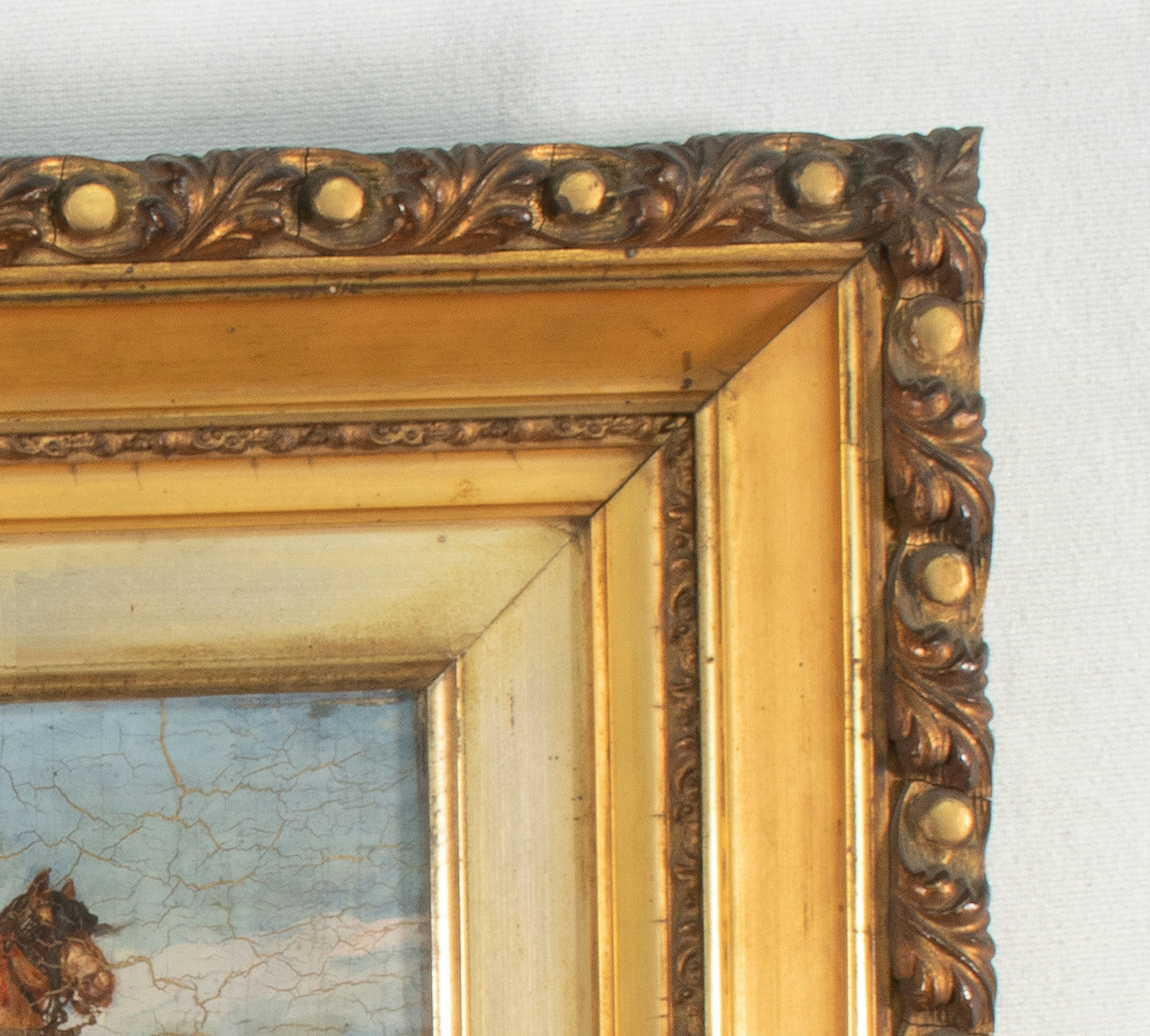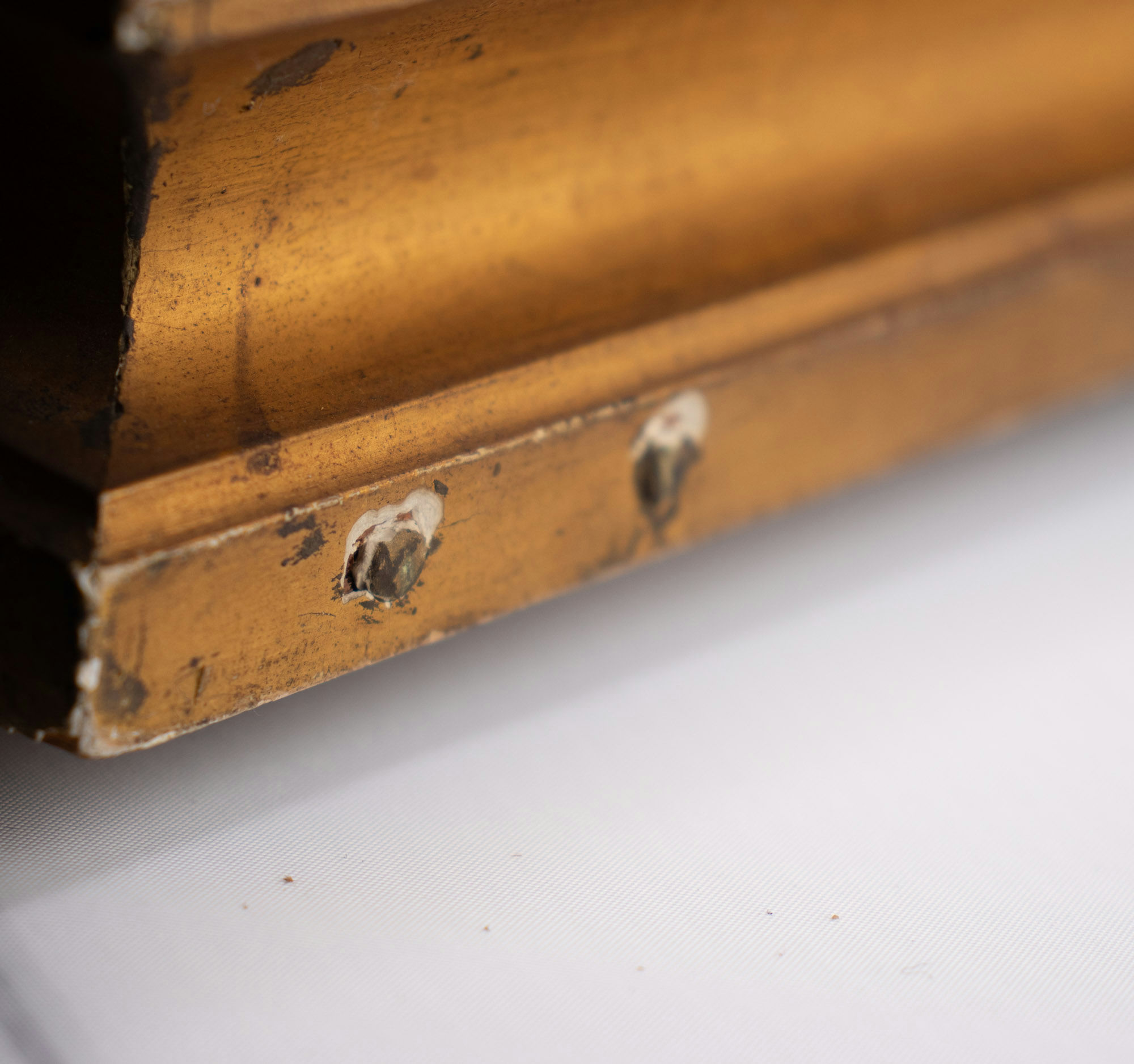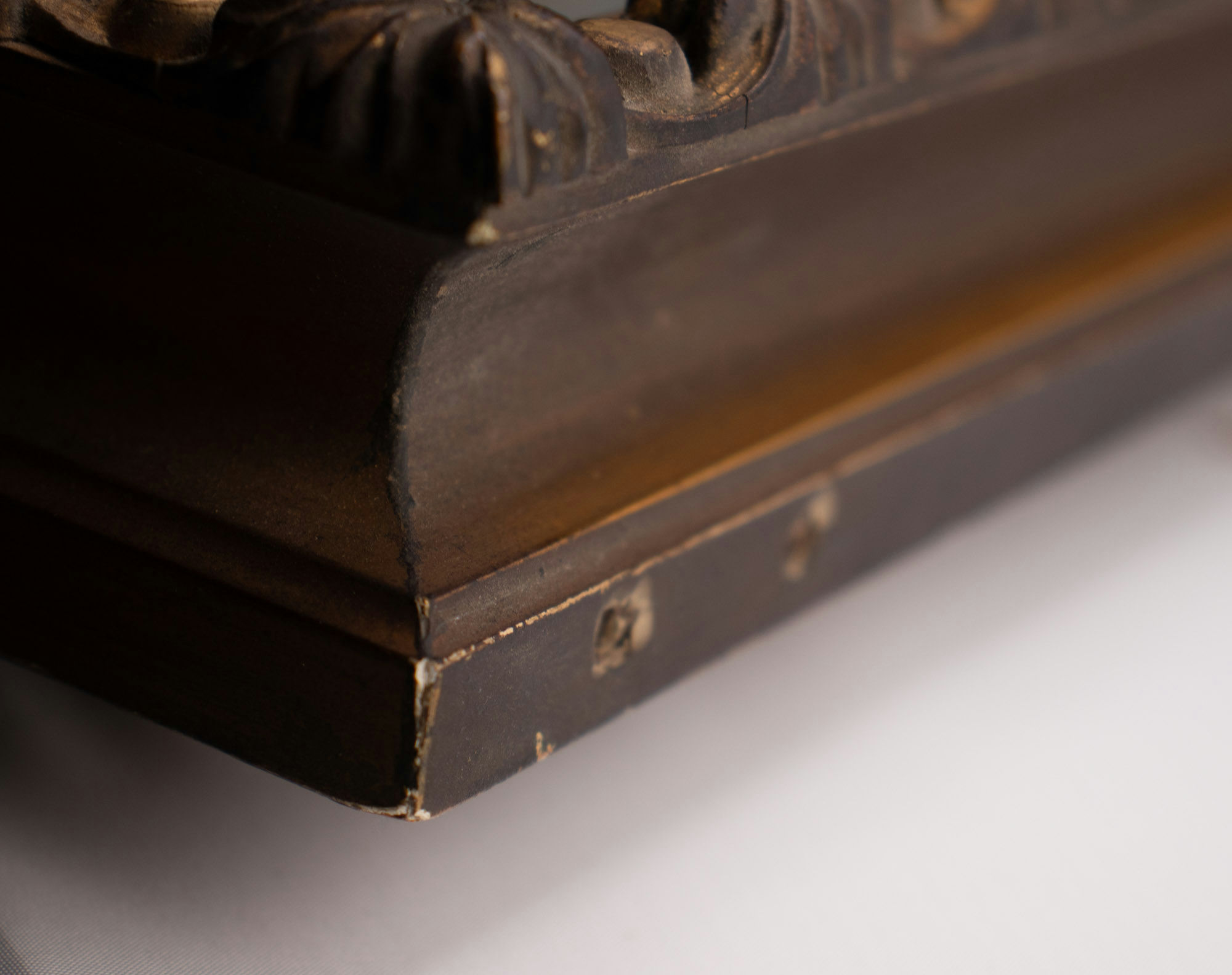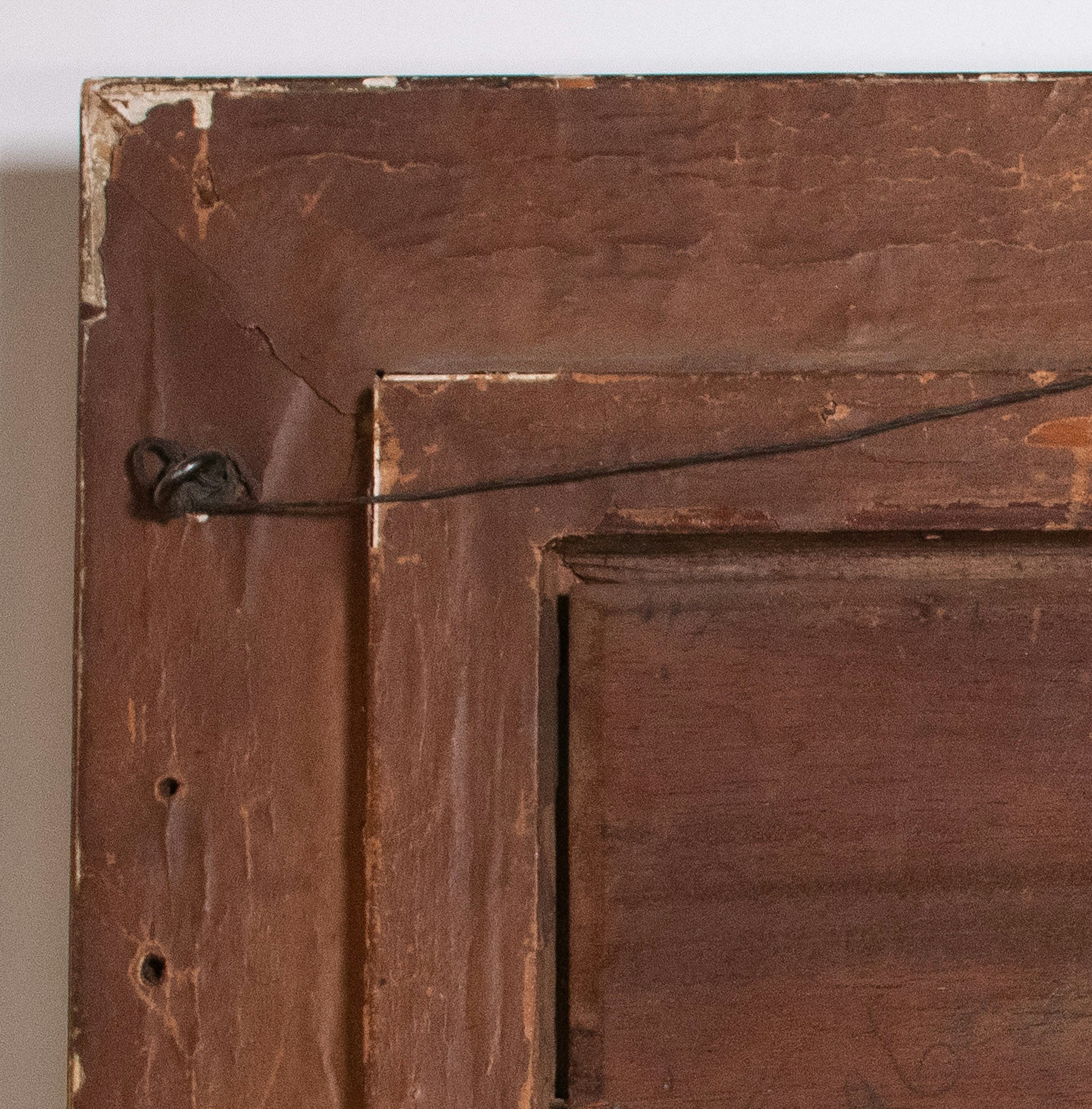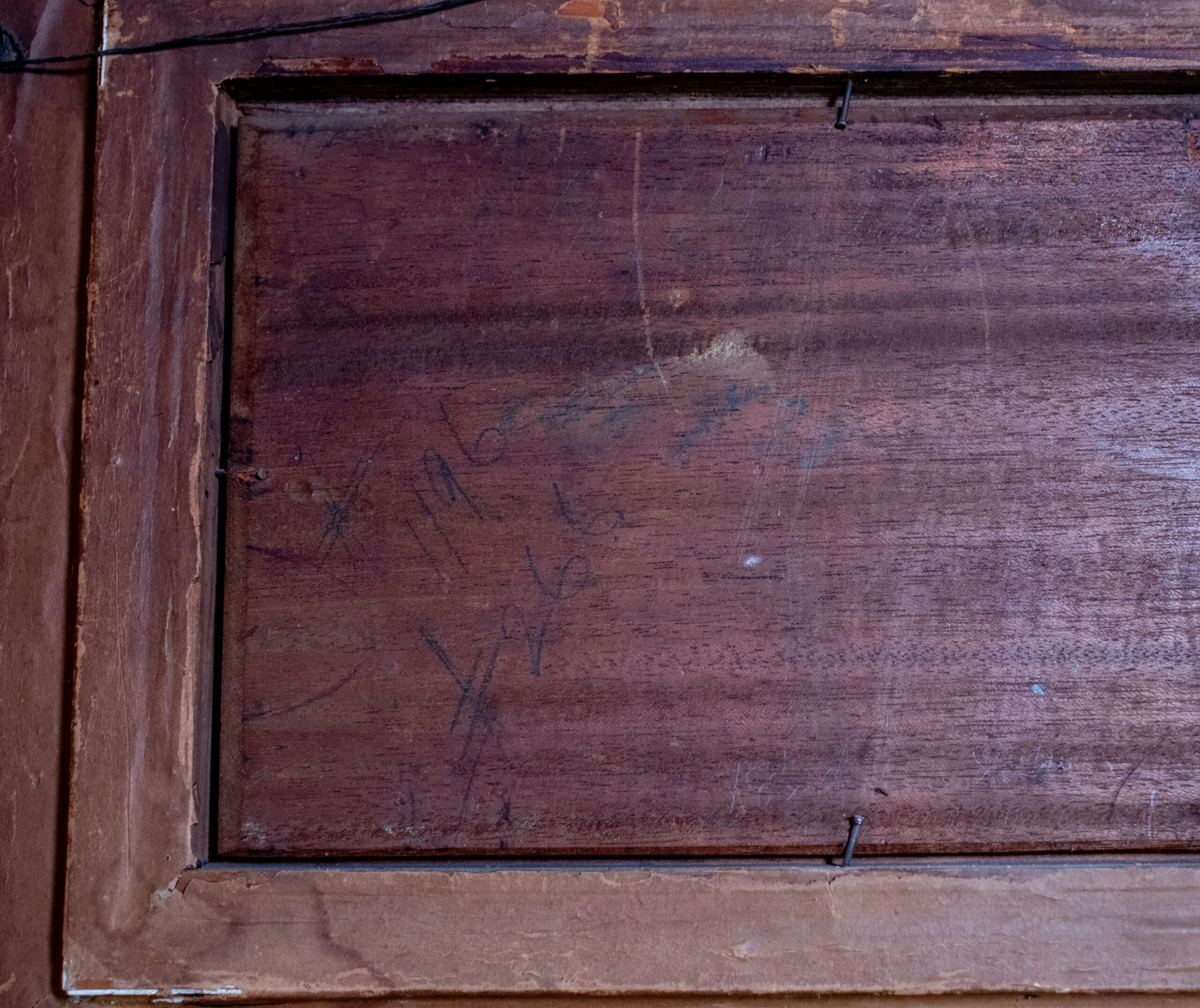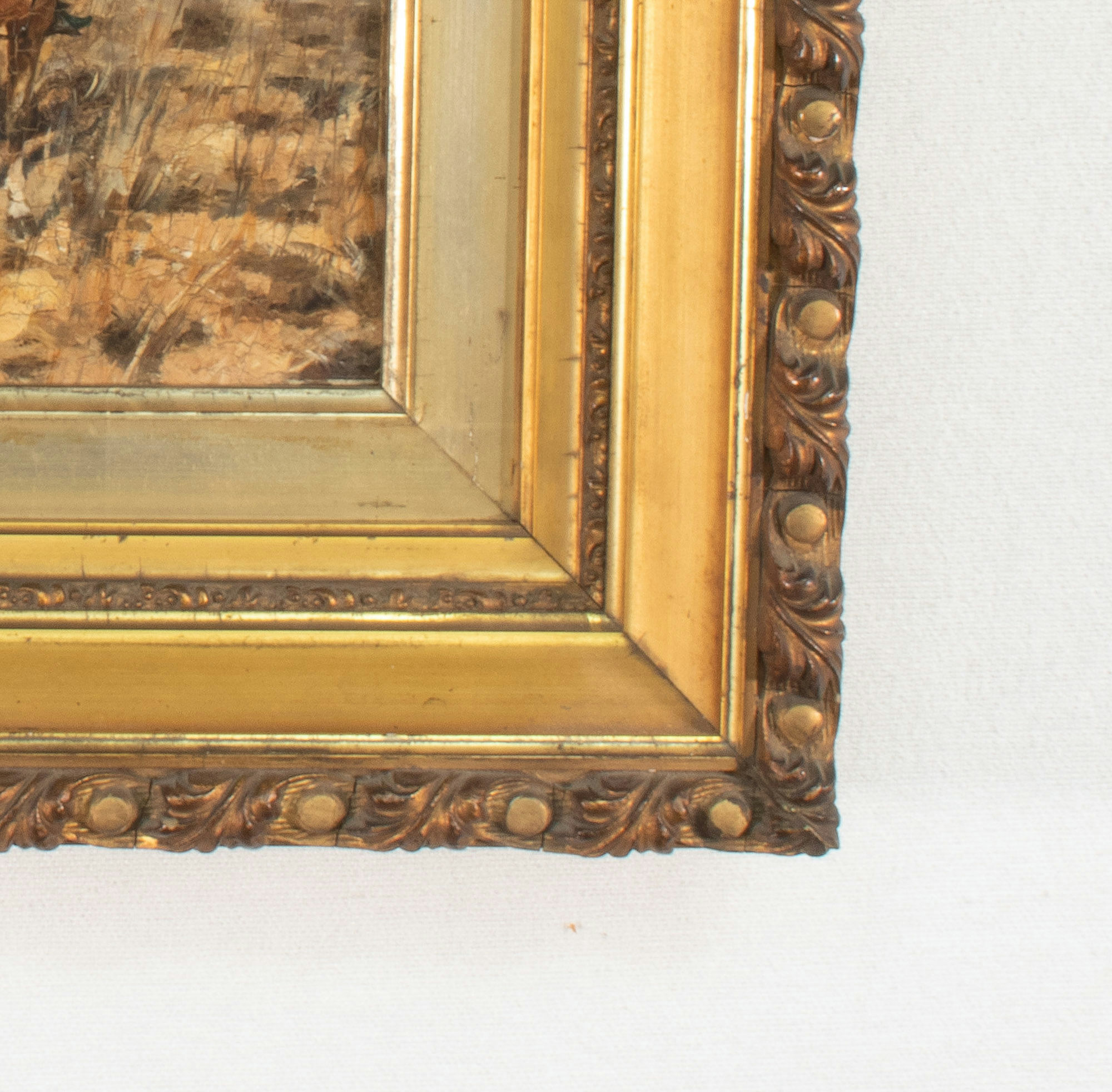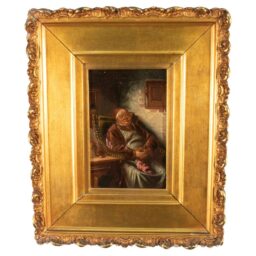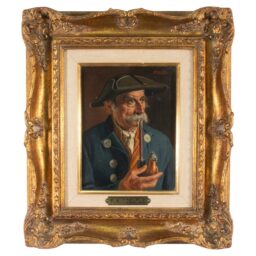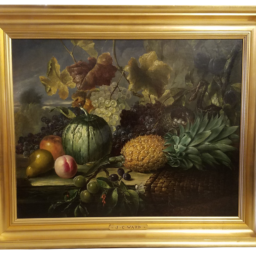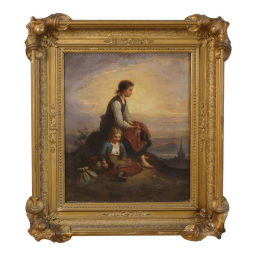Description
This late nineteenth-century oil-on-mahogany board by German painter Heinrich Maria Staakmann (1852-1940) depicts two Bedouin men suited for combat on horseback against a trampled desert landscape. Housed in a double motif giltwood frame, with the artist’s signature featured on the lower left corner, dated 1892.
Heinrich Maria Staakmann commonly painted figurative genre scenes like this one and was drawn to the emergent notions of Orientalism. The Orient—including present-day Turkey, Greece, the Middle East, and North Africa—the term Orientalism refers to the works of mostly 19th-century Western artists who specialized in Oriental subjects. Genre painting was the prevalent form of Orientalist art in the nineteenth century. This painting proceeded the First and Second Anglo-Afghan Wars (1838-42) (1878-1880) and is possibly the source for this artwork.
The horizon line in this work vanishes, blurred into the background, loosely describing an unknown location and circumstance. Identified as two Bedouin men due to the style of garments and weapons — the term “Bedouin” (from the Arabic “Bedu” – “the desert dwellers”) can be used to refer to a range of people. Very loosely it can refer to any nomads of Arabia. The Bedouin way of life depended on camels and horses: horses more commonly for combat and raids.— They wield rifles alongside knives tucked into their belts, surveying the landscape. The color palette, a blue sky suffused with yellows and oranges, indicates midday. The scene is meticulously painted with a keen attention to detail. Staakmann renders the tentative atmosphere of the riders, horses, and landscapes in this artwork.
Its original frame, is also quite beautiful, made from wood and gesso with gold gilt and decorated with foliate motif trim. The frame is a Salvator Rosa style frame, a style named after the eponymous 17th-century painter but has no connection with him. The frame is characterized by a hollow section that leads the eye into the picture, it has a wide center hollow (scotia) and raised convex outer edge and inner sight edge and ogee molding. This frame includes a rotating acanthus with bead trim on the top edge and foliate scrolls within concentric narrowed center planes.
This is an ideal painting for anyone with a historical sensibility and love of 19th-century Orientalist paintings, landscapes, or genre scenes. This small but densely informational work would be a stunning addition to a home office, den, or library.
With its original frame: H=12 in. W=16 in. D=2.5 in. 8 lbs.
Panel: H=6.75 in. W=9 in.
